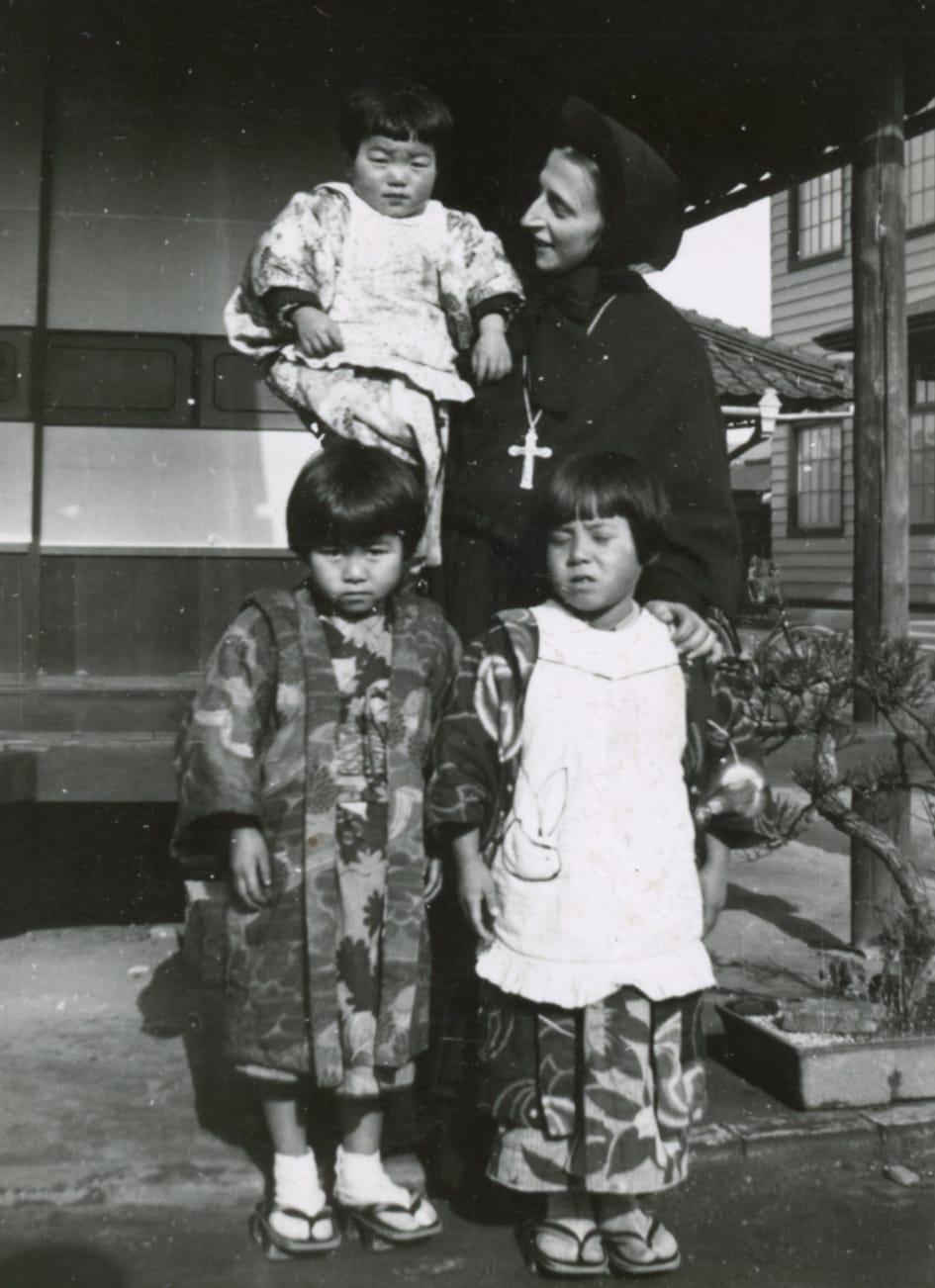Sister Marie, the Paduan woman who survived Hiroshima

"August 6th was the day of the great sacrifice." With these words, written in the autumn of 1945 to the Mother Superior of the Institute of the Sisters Auxiliaries of the Souls in Purgatory, Sister Marie Xavier recounts the hell that rained down on earth: the explosion of the atomic bomb on Hiroshima .
The device was dropped about three kilometers from the convent where the nun carried out her daily work. In a matter of moments, the atomic bomb obliterated all life, leaving only a scene of inhuman destruction: razed homes, charred bodies, screams, silence.
It was so hot that the small pond in front of the statue of the Blessed Virgin dried up in one fell swoop.
"At 8:05 a.m., the sky turned green, blue like a magnesium photograph, and at the same time, all the roofs, windows, and doors flew away; the sky, which had previously been a magnificent blue without a single cloud, turned black," Sister Marie wrote. "It was so hot that the small pond in front of the statue of the Blessed Virgin dried up instantly."
Born in Padua in 1905, Sister Marie Xavier—born Eleonora Saccardo Rasi —was the daughter of Giuseppina Saccardo, daughter of Pier Andrea Saccardo, prefect of the Botanical Garden of Padua, and Pietro Rasi. Blonde, with two long braids, Eleonora entered the novitiate of the Sisters Auxiliaries of Purgatory in Sanremo on November 1, 1922, at the age of 17, taking the name Sister Maria Saveria, inspired by Saint Francis Xavier. From him, she inherited the missionary dream: to bring the Gospel to the multitudes. At just twenty, she took her first vows and completed her formation in Florence, then in Pontoise, France. In 1936, she left for Japan, her destination being Hiroshima. There, in the community of Kusunoki-cho, she was among the first nuns to enter the convent founded the previous year. He learned the language, immersed himself in the local culture, worked in the hospital, visited families, baptized the dying, spoke to young people, living the Gospel with discretion and tireless charity.

On August 6, 1945, the atomic bomb struck the city. The convent of the Auxiliaries was completely destroyed . But Sister Marie and her fellow nuns, inexplicably guided by an instinct she attributes to the "Good Lord," took refuge inside the building moments before the explosion. The nun writes in the letter: " Instinctively and certainly inspired by the Good Lord, we all returned to the house, which was crumbling on all sides ." She continues: "Humanly speaking, it was madness because the dust was falling on our heads, but this saved us from the horrible burns caused by that single bomb, because it was a single bomb that destroyed the entire city of Hiroshima ." She continues in the letter written in the autumn of 1945: "Of the 440,000 inhabitants, the census two months ago counted only 130,000. This tells you clearly what protection we were given." And the letter continues: "The plane dropped the bomb, which remained in the sky, supported by three parachutes. At a certain temperature, under the influence of the rays, it exploded, bringing destruction and death to a radius of 35 km."
Instinctively, and no doubt inspired by the Good Lord, we all ran back into the house, which was crumbling from every side. This saved us from the horrific burns caused by that single bomb.
After the tragedy, Sister Marie was among the first to assist the wounded, alongside the Jesuits led by Father Arrupe, Superior General of the Society of Jesus . She remained in Japan until 1961, living with and for the people, a silent witness to civil and spiritual reconstruction. Upon returning to Italy, she cared for her deaf sister, left alone after the death of her mother and brother, sacrificing her return to the mission. She was then assigned to Rome, to Villa Mercede, and finally to Sanremo, where she continued to work among children, the elderly, and the poor, always with a gentle voice and ardent heart. She died in 1994, a full fifty years after the Hiroshima apocalypse.
For all, Sister Marie was "the nun with the gentle voice." Her life, marked by faith, courage, and quiet charity, remains a testimony to peace. For this reason, eighty years after the atomic bomb, on December 12th, during the plenary meeting of the Prevention Department of the Ulss6 Euganea of Padua —whose team recently rediscovered the nun's story—the Ulss6 and the Municipality of Padua will confer upon her a memorial honor. This gesture is intended to recognize the human, spiritual, and civic value of a woman who, with humility and determination, transformed suffering into hope.
In the opening photo, Sister Marie Xavier in Japan (photo by the Ulss6 Euganea press office in Padua)
Vita.it





